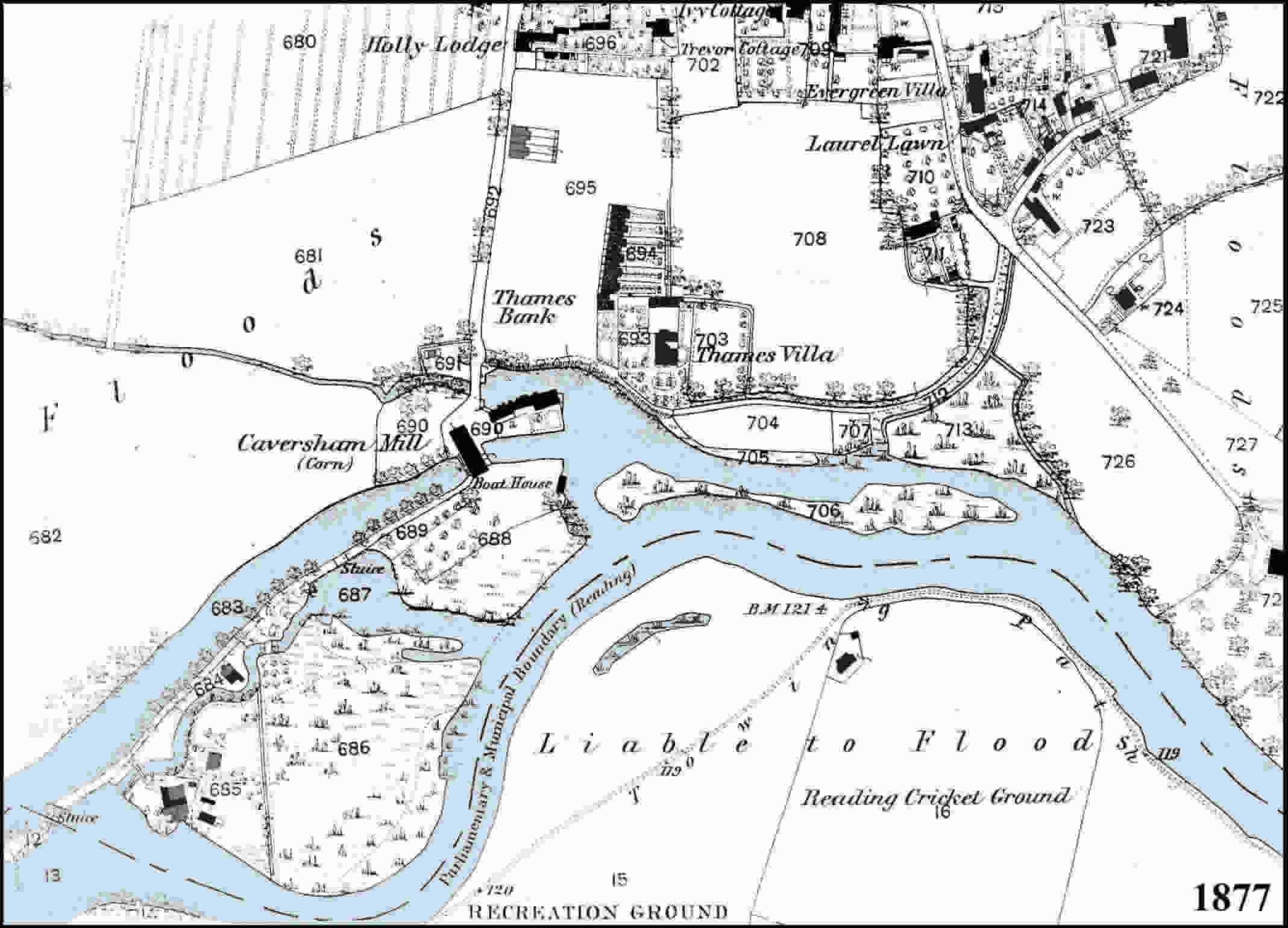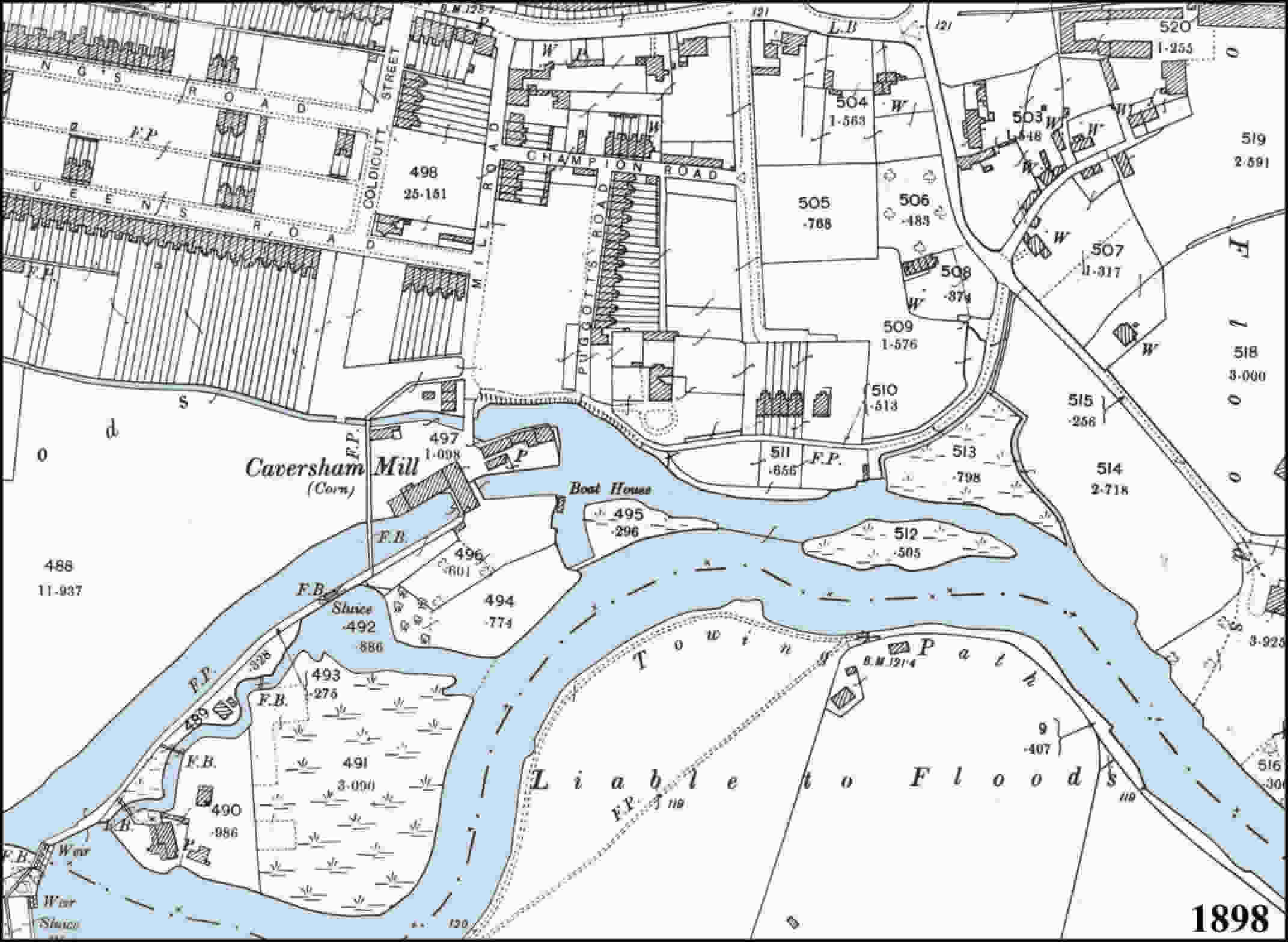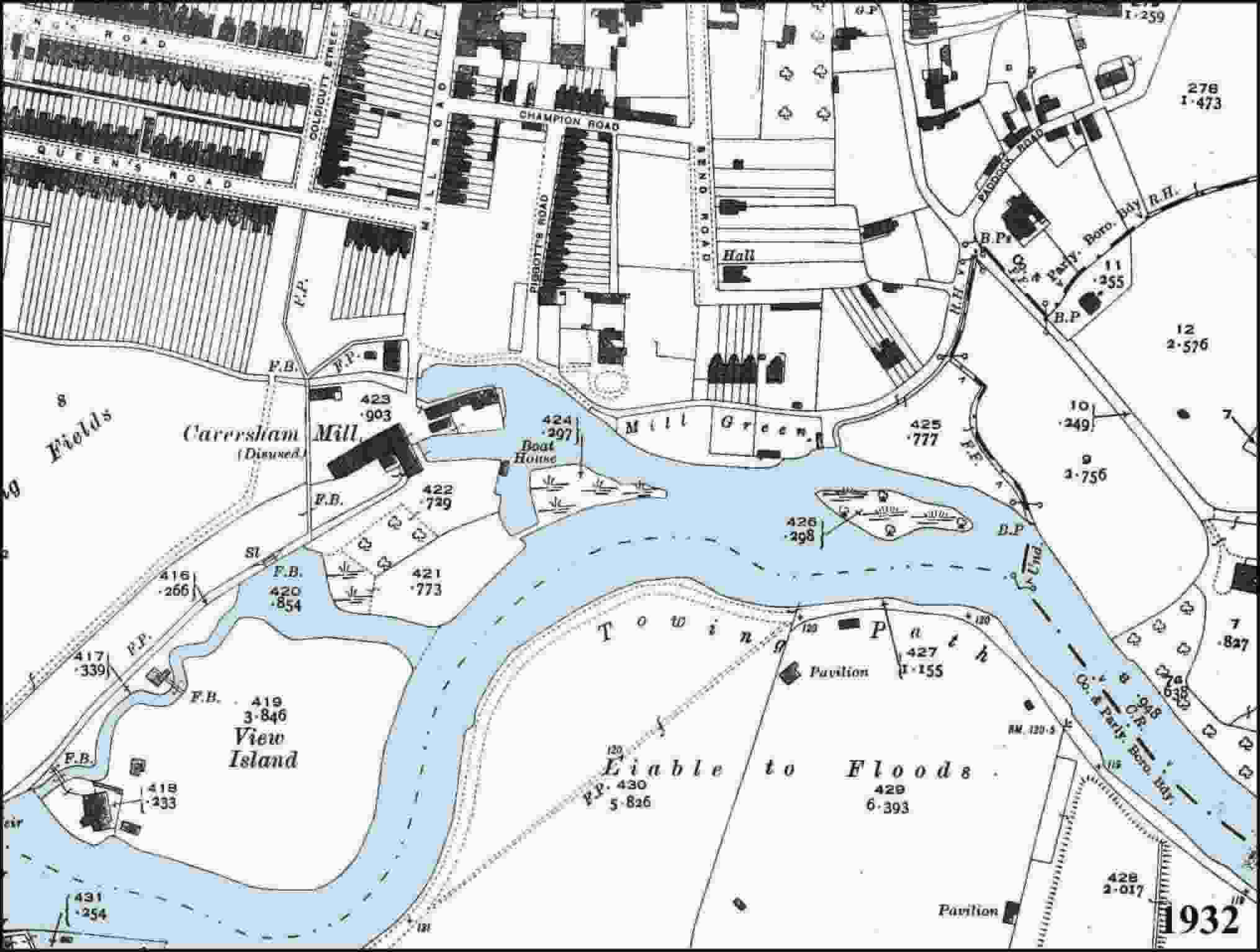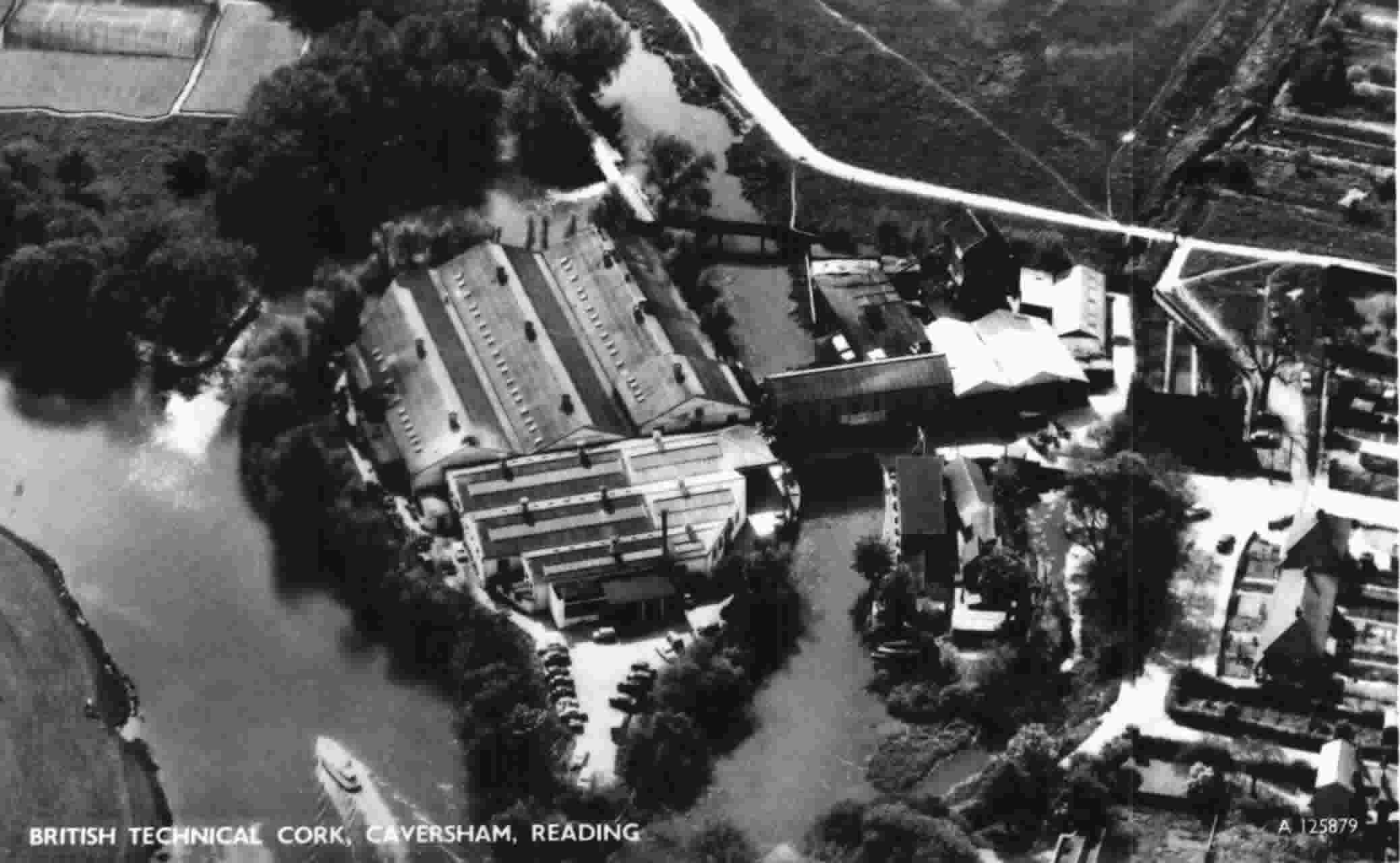The last 150 years of Mill Green |
|
|
150 years ago Mill Green was common land giving access to the river.
However in 1865 it was the subject of an enclosure award, and along with most other
surviving areas of common land in Caversham it was simply carved up and awarded to
adjacent landowners.
The last 20 years of the 19th century saw a great building boom – the maps of 1877 and 1898 show how, by the turn of the century, rows of terraced houses had swept across the space between Caversham and Lower Caversham. Lower Caversham was no longer a separate settlement.
The first houses in Mill Green that we know about were Thames Villa, which stood on the site of Monkley Court, and four cottages on land now occupied by the flats at the end of Star Road. All appear on the Ordnance Survey map of 1877, but local directories did not list the residents of the cottages until 1897 – they were obviously not considered important enough! Even when the residents were listed the cottages were not actually named, (as Mill Green Cottages), until 1914. The cottages of the Victorian terrace which are now numbers 30-40, (but originally numbered 1-6 Elm Villas), and Florida Villa (now 42), were built in the 1890s on land which previously belonged to Ivy Cottage. This old house still stands at the junction of Gosbrook Road and Bryant’s Avenue. Shortly afterwards this part of Caversham became notorious for the murder of several babies, thrown into the Thames from the Clappers by Amelia Dyer, who lived in Piggotts Road.
By this time the picturesque old mill that appears in several early 19th century paintings had been replaced by a rather severe and utilitarian building, which can be seen in a Francis Frith photograph from 1890. The earlier mill had stood at little downstream from the new, about level with numbers 10-14. Re-siting the mill created space for the erection of cottages for the mill workers.
In 1886 the land upon which numbers 2-12 now stand was sold by a group of four people including Joshua Champion, who at one time lived in Thames Villa. The name of Champion crops up frequently in 19th century Caversham. William Champion, a grocer who died in 1826 owned much land in Caversham - in 1852 John Champion was the miller, as was another William Champion in 1875. The land was sold again in 1905, but for some reason not built upon for another 3 decades. The map accompanying the deeds from the 1886 sale shows that the land at number 14 was excluded from these transactions and was retained by Mrs Stent from Thames Bank, the old house which stood on what is now the driveway of Monkley Court. It was to be another a century before a house was built there.
In 1888 the land that became the orchard behind Florida Villa was sold to George Butler by William Fisher, a coal merchant. The three cottages now numbered 60-64 were originally named Riverview Cottages and date from just after the turn of the century. In 1923 the miller, Joseph Lawes, sold the river frontage from Thames Villa to number 40 to Jesse Rogers, who later lived at number 42. The river frontage at 42 was already part of that property, having been sold to a former owner. When numbers 2-12 were built in the mid 1930s, the rest of the houses already standing in Mill Green acquired their present numbers. Somebody must have guessed that more houses would be built because the numbering scheme left gaps, (although it took a few attempts to get it right!). It was about this time that the last grain was ground in the mill, and the site was taken over by British Metal Powders. During WWII cordite was made there, and a fire resulted in the evacuation of the whole neighbourhood.
Another disaster struck in the winter of 1947 when severe floods swept the area, but the houses in Mill Green were affected less badly than might be imagined. Even though large parts of Caversham were under a couple of feet of water, it stopped at the doorsteps of the houses at the eastern end, and at the western end it went no further than the gate. A photograph of Rose and Andrew Hogan outside number 4 (probably from the mid 40s), shows that this part of Mill Green was still a green with just a footpath across it, but by 1956 the Ordnance Survey map of the area shows a road. The same map shows that the Mill Green Cottages, (which had become numbers 88-94), had been replaced by Giffard House and Pembroke House on Star Road - flats named in memory of Caversham’s early owners. An aerial photograph of the mill, by now a cork factory, shows the Victorian mill building and the mill cottages in the late 50s. Just out of shot of the photograph, Thames Villa was still standing, but in the 60s it was to be replaced by numbers 22-28 and Monkley Court. Later the orchard behind Florida Villa became housing on Send Road.
In the late 70s Caversham Mill was demolished – sadly the developers chose to name the new estate there after themselves instead of keeping the name that had survived almost a millennium, leaving only Mill Green and Mill Road as reminders of this area’s historic significance. |
|
| Previous | |

|
|







